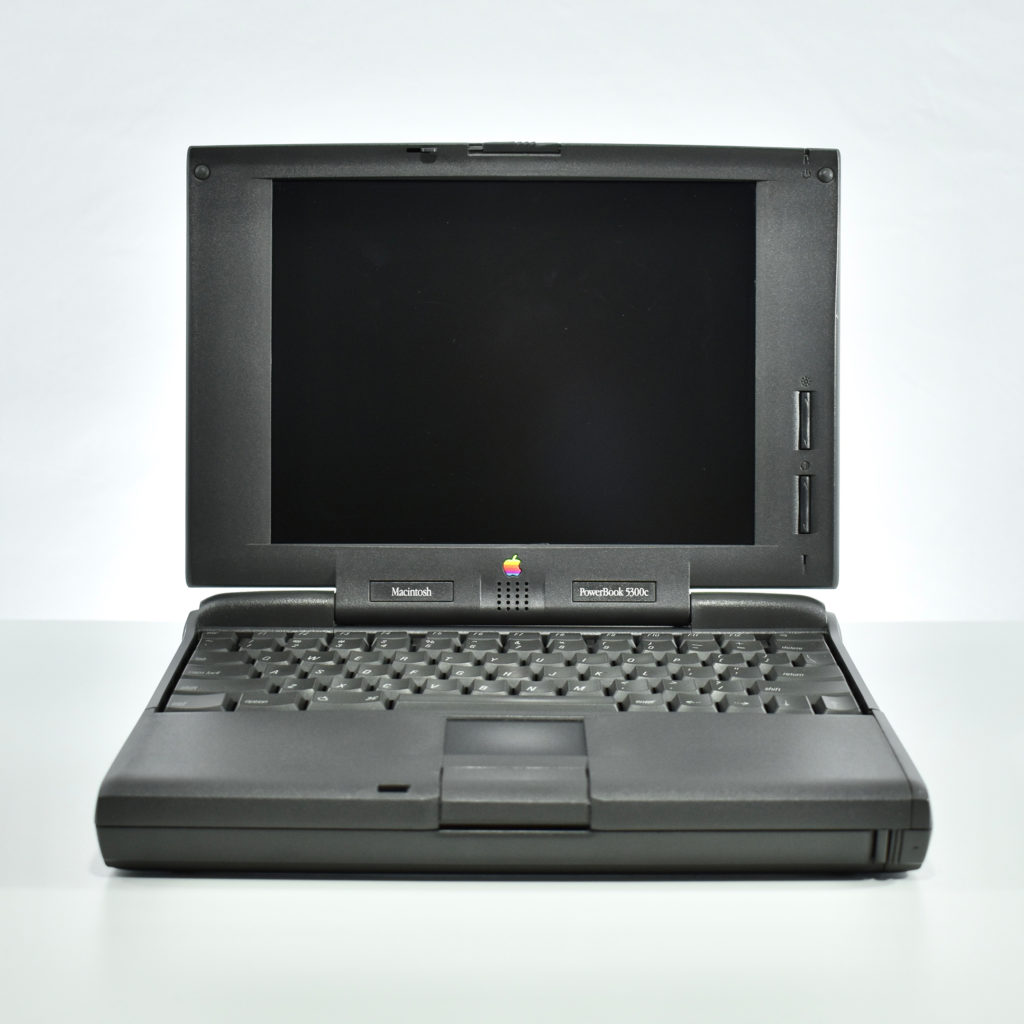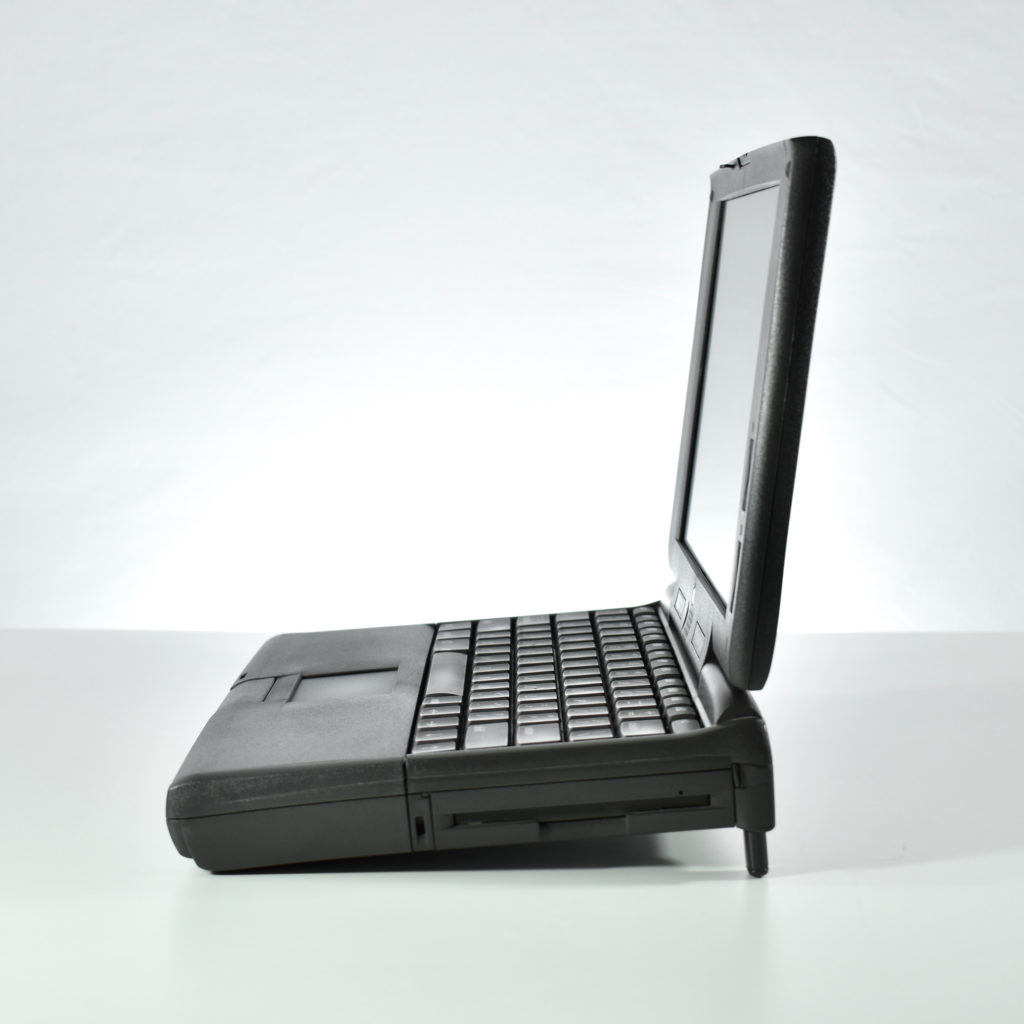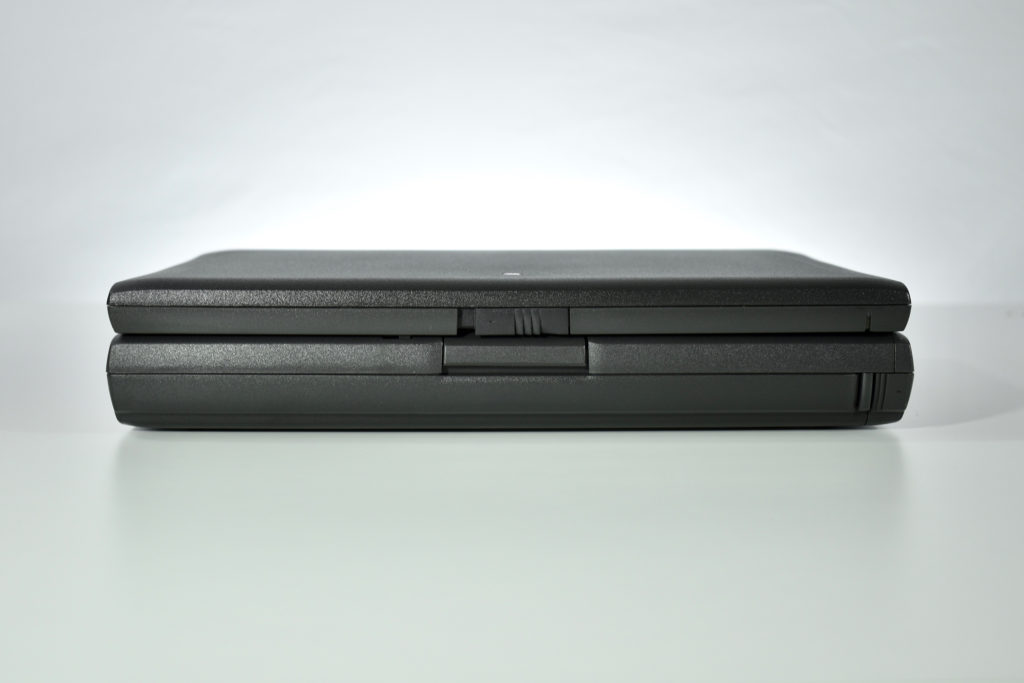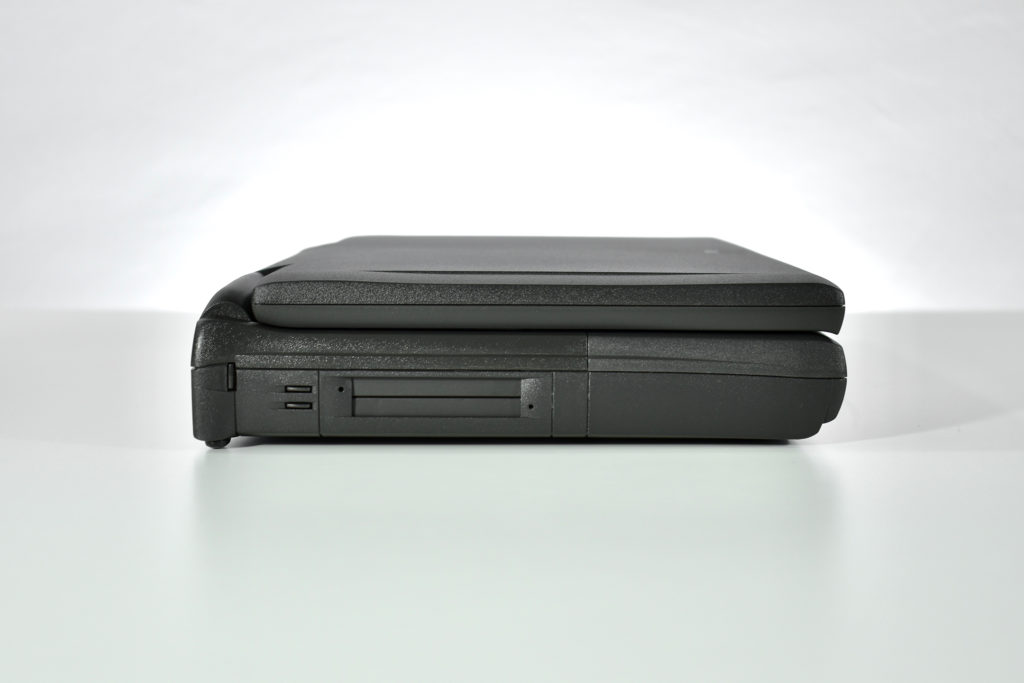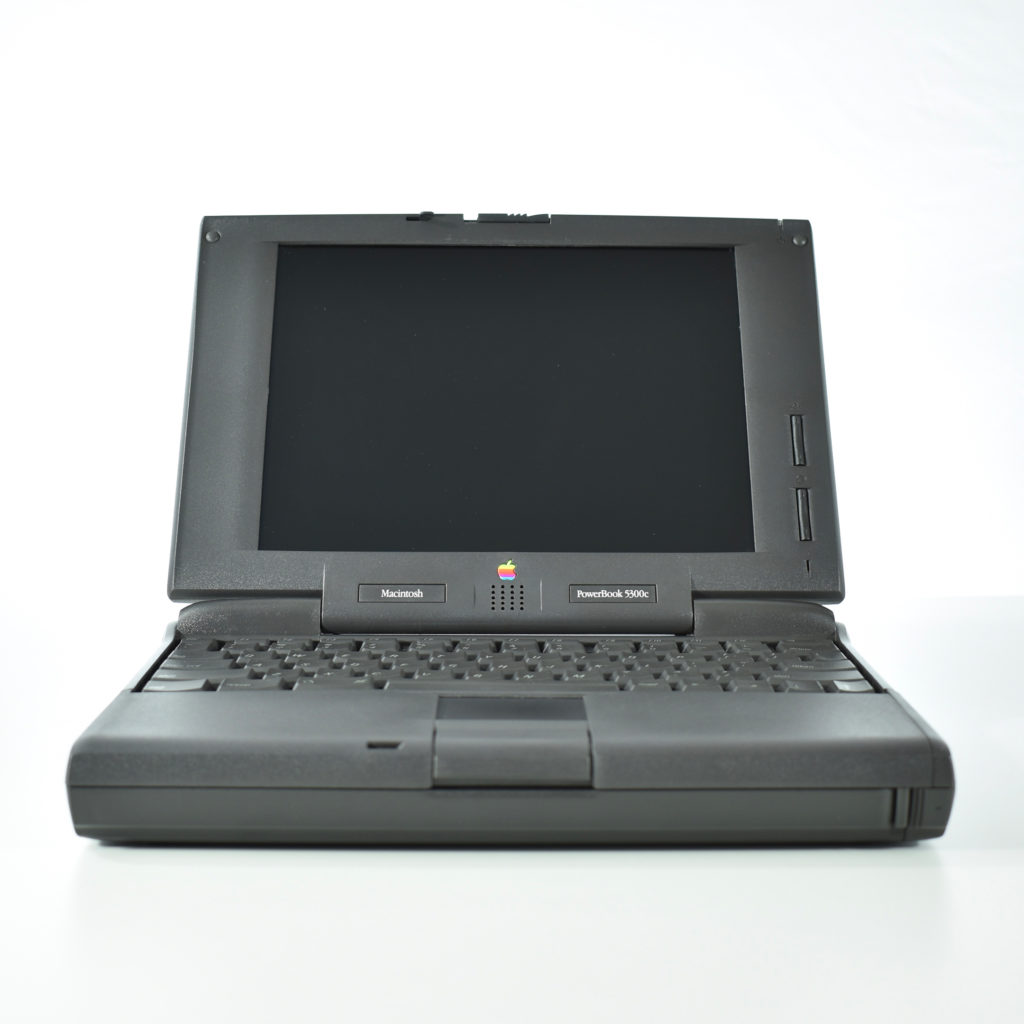The Macintosh PowerBook 5300c/100 shipped with a 100 MHz processor (PowerPC 603e), 8 MB or 16 MB of RAM, and included a 500 MB or 750 MB hard drive. The “c” in the name indicated its 10.4-inch color active-matrix display (640×480) that allowed 16-bit color on its display or an external monitor.
This was among the first Apple laptop series to use “hot swappable” drive bays (along with the PowerBook 190 that shipped the same year with a similar design), meaning that users could remove and replace the internal drives without restarting the computer.
This laptop shipped with Macintosh System 7.5.2 and could run operating systems up to Mac OS 9.1. The PowerBook 5300c weighed 6.2 pounds.
Because this laptop was designed to be as small as possible at the time, it had insufficient internal space for an internal CD-ROM drive. Its design also replaced the rotating back feet of previous PowerBook models with spring-loaded feet that pop out to elevate the angle of the laptop. The case also used a darker shade of grey than its predecessors (almost black).
PowerBook 5300 computers were infamous at the time for shipping with a few quality problems. Notably, the internal battery on two early models reportedly overheated and burst into flames, a design flaw that Apple corrected by switching from lithium ion to nickel metal hydride batteries. Apple reported that only a few hundred laptops shipped with the early battery and a free replacement was offered. Some users also experienced problems with the display hinges cracking over time and the internal connector ribbons wearing out leading to screen failure (the screen would show vertical lines or go completely black).
The PowerBook 3400 replaced the 5300 and some of the 5300-series hot-swappable drive bay modules could be used with newer 3400 PowerBooks.

